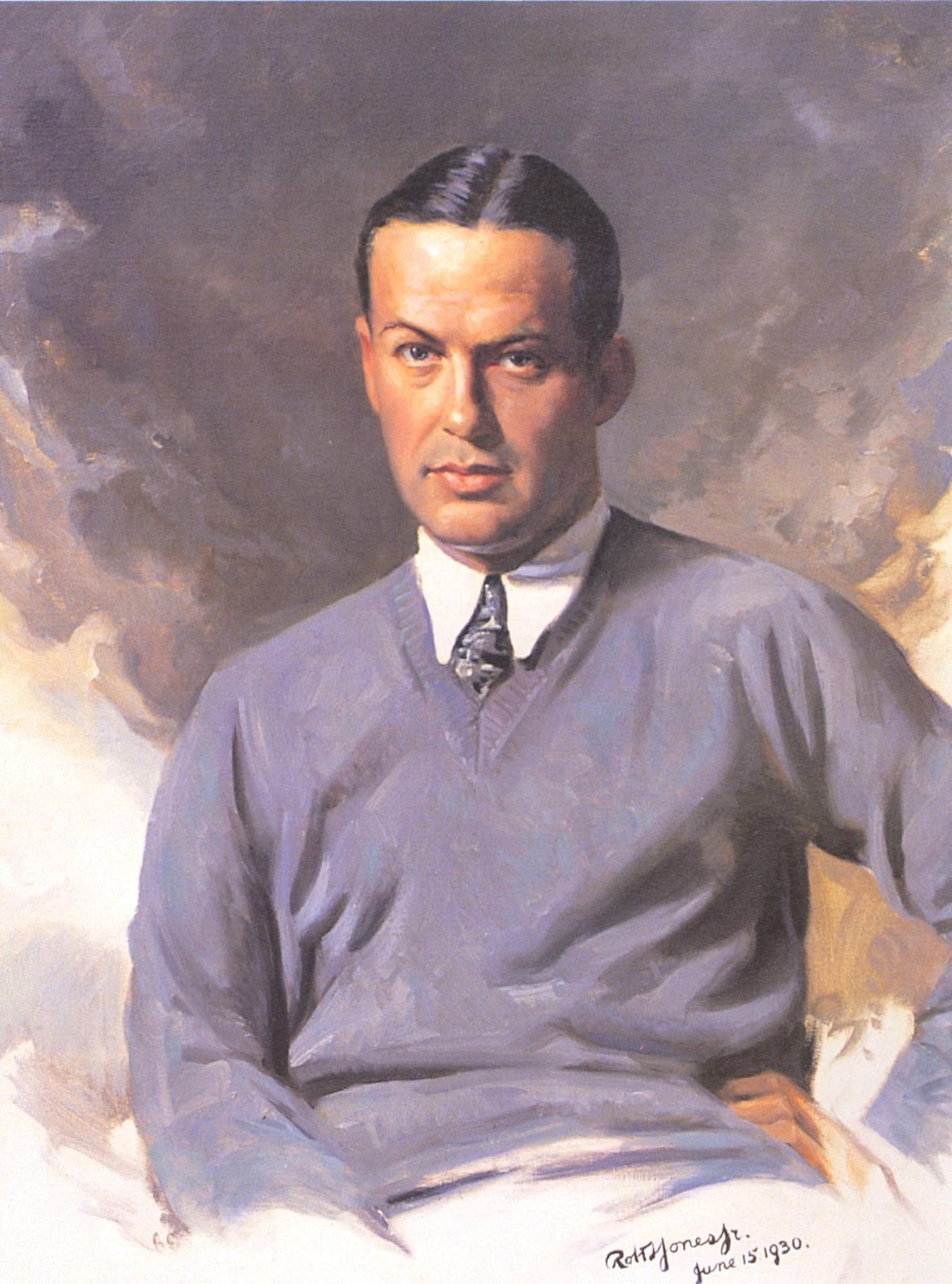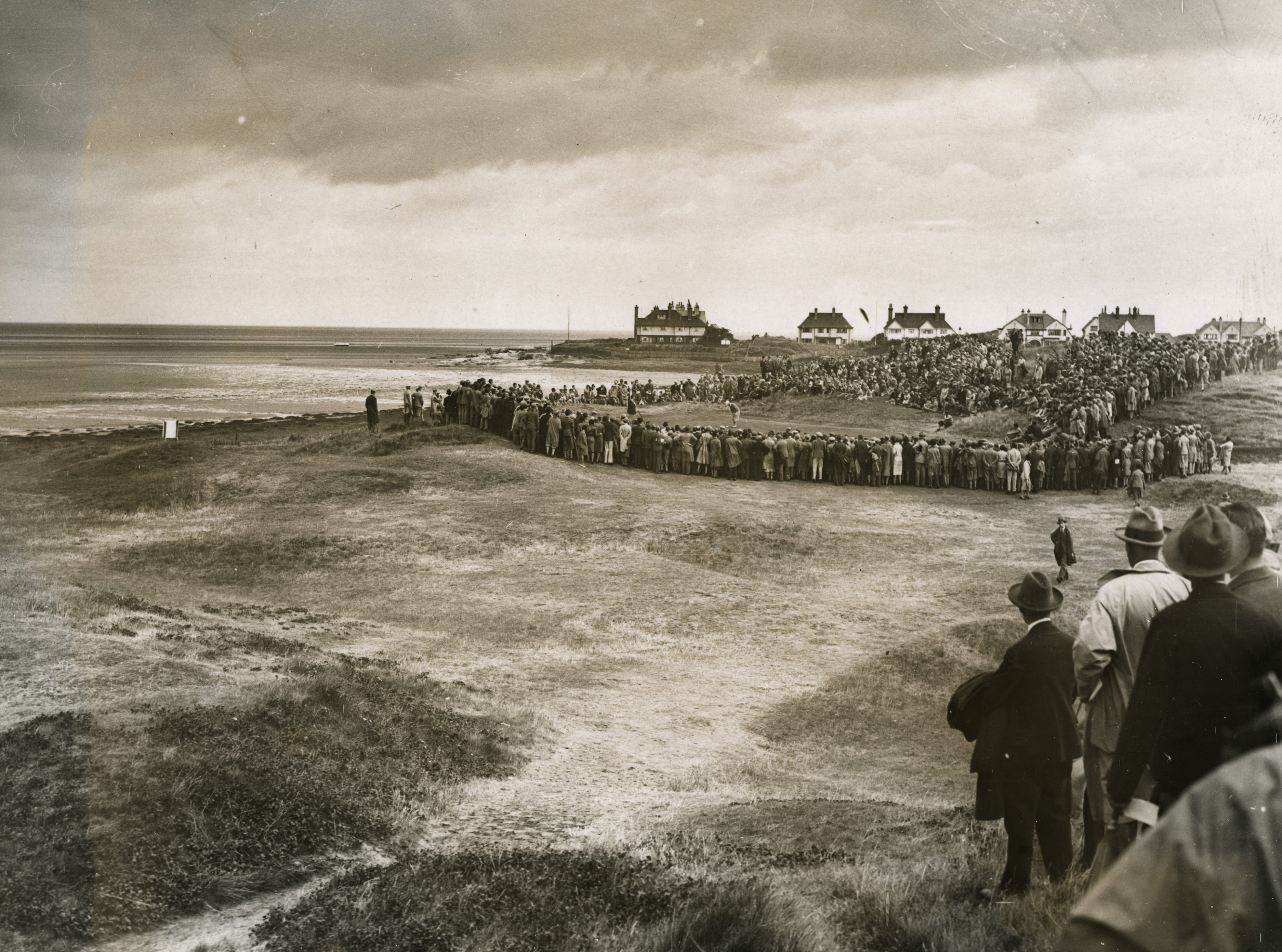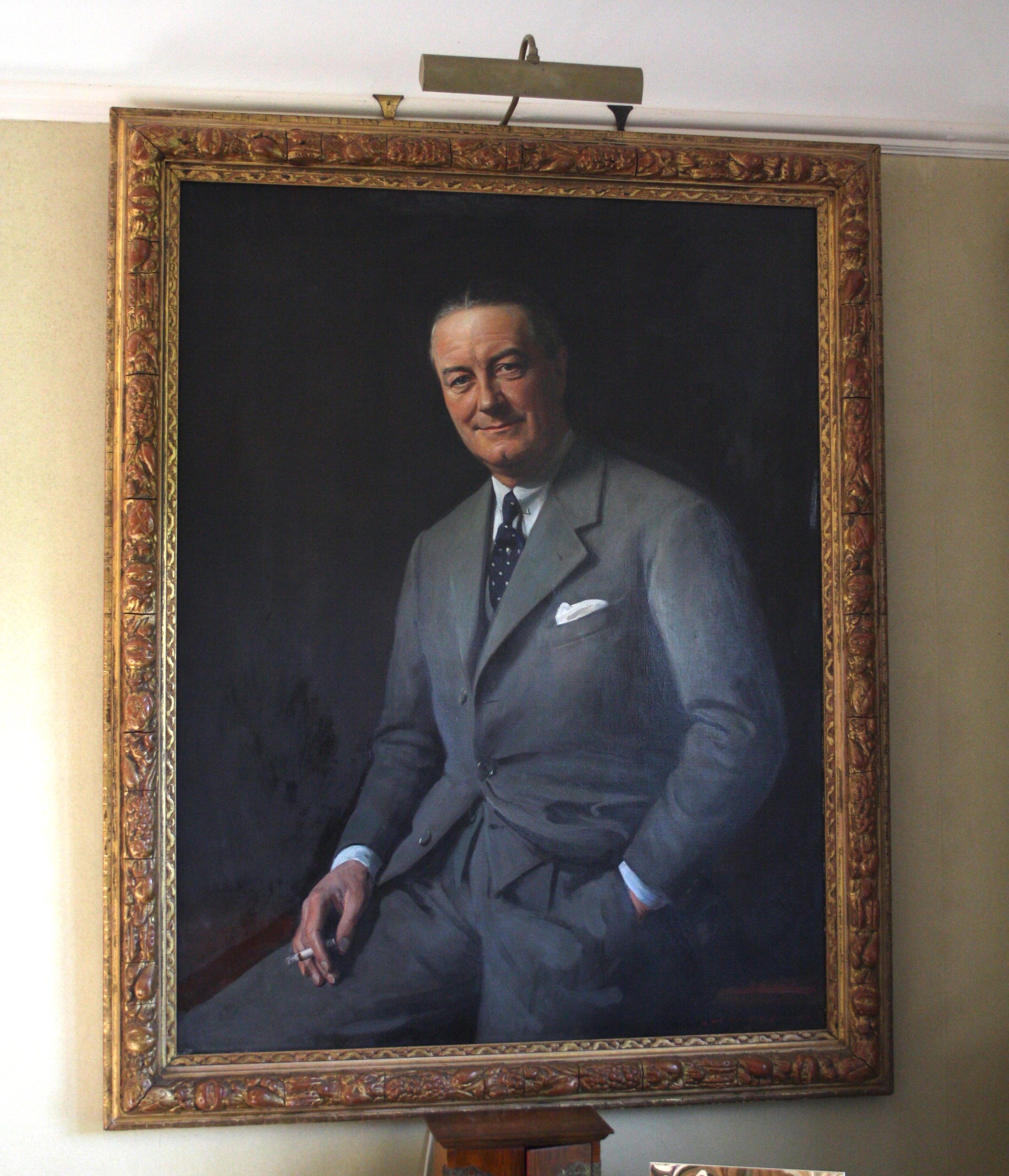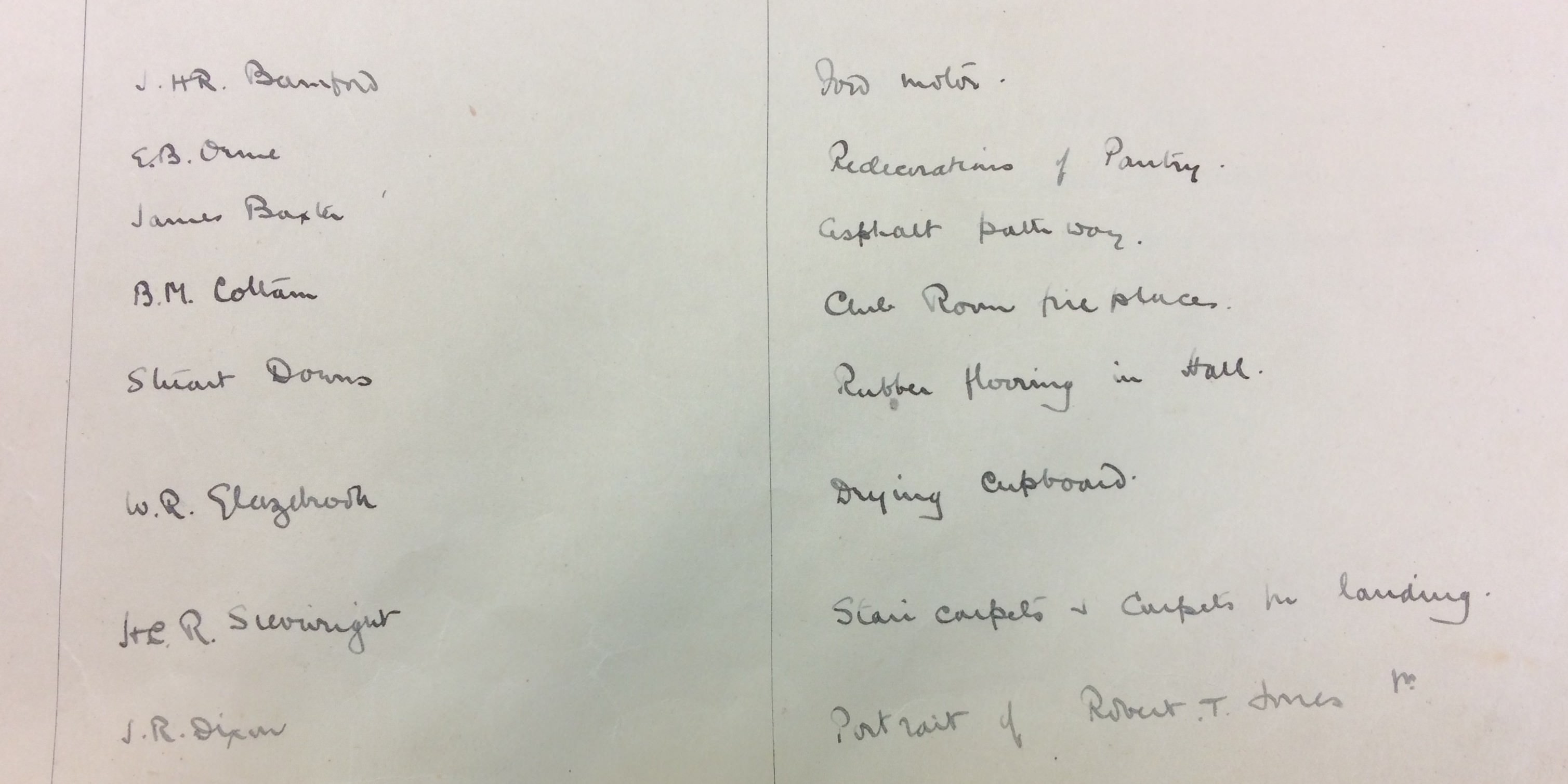90 years ago, Bobby Jones retired from competitive golf only months after completing his legendary Grand Slam, which included the winning of the 1930 Open at Royal Liverpool. He was 28 years old.
Here, Philip Stern tells the story of three great paintings of R. T. Jones and his grandfather’s role in creating two of them - including the Hoylake portrait above.
A couple of years ago my good friend Anthony Shone pointed out to me the article about the Club gift book in the 2018 edition of our Royal Liverpool magazine. It reproduced a page from the book which shows that in 1930 a gentleman called J. R. Dixon presented to Royal Liverpool a portrait of R. T. Jones.
Knowing a little of my family Anthony asked me if this J. R. Dixon was my grandfather, and I was able to tell him that indeed he was.
As I was unaware that JRD had gifted this portrait to the Club I was prompted to do a little research into its background.
Above: the entry in the Club gift book
John Rothwell Dixon was born and raised at Great Marton not far from Blackpool and became a member of nearby Royal Lytham & St Annes Golf Club.
Among the Dixon family’s business interests were textiles, and JRD assumed control of three cotton mills in Blackburn, running them from offices in Manchester.
Around 1913, after his marriage, he moved from Blackpool to Bidston on the Wirral peninsula and a house on Vyner Road South. The following year he became a member at Hoylake. As a cotton mill owner he would have visited Liverpool frequently to buy raw materials, and it is likely that among the merchants he encountered were a Royal Liverpool member or two who invited him to join them.
From Bidston JRD would commute to either Blackburn or Manchester, a reminder that the rail network of more than a century ago was at least as efficient as today’s if not more so.
Throughout his life JRD remained actively involved with his birthplace of Marton, particularly with the working men’s club which his father, John Picken Dixon, had founded and of which he was the president until he died. It was considered to be one of the finest such clubs in the country. JRD is buried in the churchyard of St Paul’s, built on Marton land which his father had donated.
JRD was a gregarious man who loved to entertain friends at his Wirral home. A frequent guest at his house was Sir Malcolm Sargent who would often visit when conducting at the Liverpool Philharmonic Hall. JRD himself was rather a musical philistine and would infuriate my grandmother, a great admirer of Sir Malcolm, by greeting him with the words, “Hello, Malcolm. How is your band?”
He maintained his membership at Lytham and was elected Captain for 1926, the year of Bobby Jones’s victory there in the Open Championship. Sadly he was unable to present Jones with the Claret Jug due to illness - his place was taken by General Topping, a senior past Captain.
Because his poor health meant that JRD could not fulfil much of his role in 1926 he was elected Captain again in 1928. When Jones accepted life membership of Royal Lytham in 1930, JRD presented to the Lancashire Club the portrait of Jones by J. A. A. Berrie which still hangs in the members’ clubroom.
.jpg)
Above: Royal Lytham’s portrait of Bobby Jones by Berrie
By coincidence, a few days after my conversation with Anthony, my first cousin Charles Dixon, also a grandson of JRD, stayed with us, and I took him to see our portrait of Jones by Berrie, which hangs above the staircase of our clubhouse.
He immediately remarked that there was a portrait of J. R. Dixon himself, very similar in style and size, which hangs in the house of Charles’s late brother. He has since verified that the signature on this portrait is that of J. A. A. Berrie, so it seems that J. R. Dixon commissioned Berrie to paint the Hoylake portrait of Jones, and the portrait for Royal Lytham, and also one of himself for good measure.
The golfing world can be grateful that he had a greater interest in portraiture than he did in music.
The first portrait of Bobby Jones by Berrie was commissioned by Sir Ernest Royden, an ex-Captain of Wallasey, when Jones played there whilst qualifying for the 1930 Hoylake Open. It is of head and shoulders, and is the only one of the Berrie portraits of Jones which is signed by Jones himself and it hangs today in the Wallasey clubhouse.

Above: The portrait at Wallasey Golf Club commissioned by Sir Ernest Royden and signed by Jones himself
In Steven Reid’s excellent book, Bobby’s Open, he quotes a letter from Jones to Royden in which he wrote: “Mr Berrie kept me occupied for not more than thirty minutes and during that time pleasantly refreshed me with a whisky and soda. As an object lesson in portraiture, this was the best I have ever seen.” Jones also wrote in the same letter: “I have a copy of the Wallasey portrait in my home, where it always attracts attention and admiration.”
I assume that this was the only sitting which Jones did for Berrie, and that the Hoylake and Lytham paintings were created by Berrie from sketches made at that sitting. Some members who have seen all three portraits say they think ours is the best, but that may be a biased view!

Above: Bobby Jones putting on the 11th at Hoylake in The Open of 1930
J. A. A. Berrie was born in 1887 and died in 1962, and was one of the foremost portrait artists of his day; his subjects included George V, Edward VIII, Queen Mary, George VI, Winston Churchill, and Earl Mountbatten of Burma.
Incidentally, I was amused to see in Steven Reid’s book a reference to the slow play of Walter Hagen in the 1926 Open at Lytham, which was criticised by Bernard Darwin and other journalists and fellow players. One remarked of Hagen that, “He was so meticulous in his play that he took three hours to complete the round.”
This was viewed as scandalously slow.
How times have changed.
Below: The Berrie portrait of J. R. Dixon

Advertisement



.jpg)


